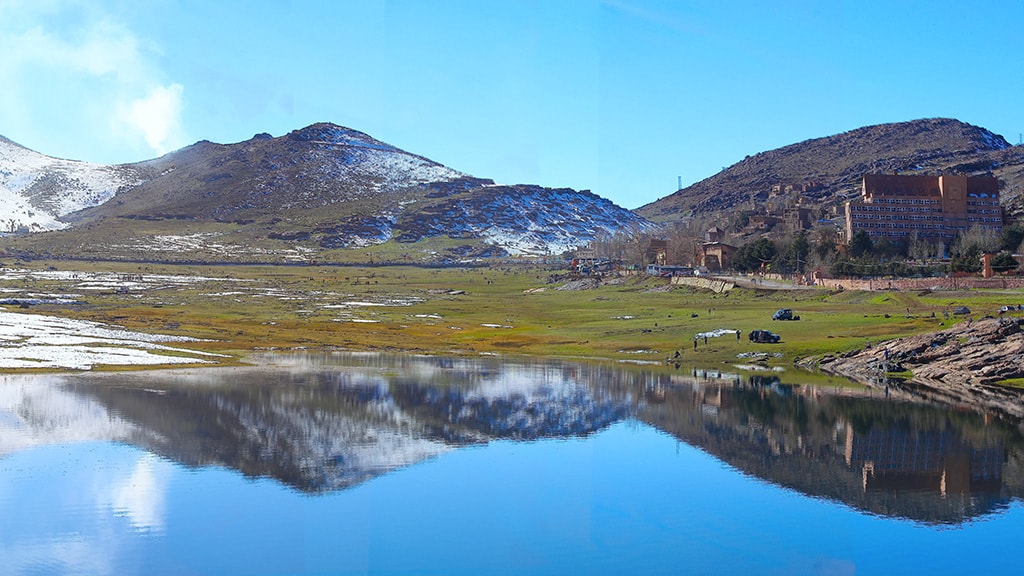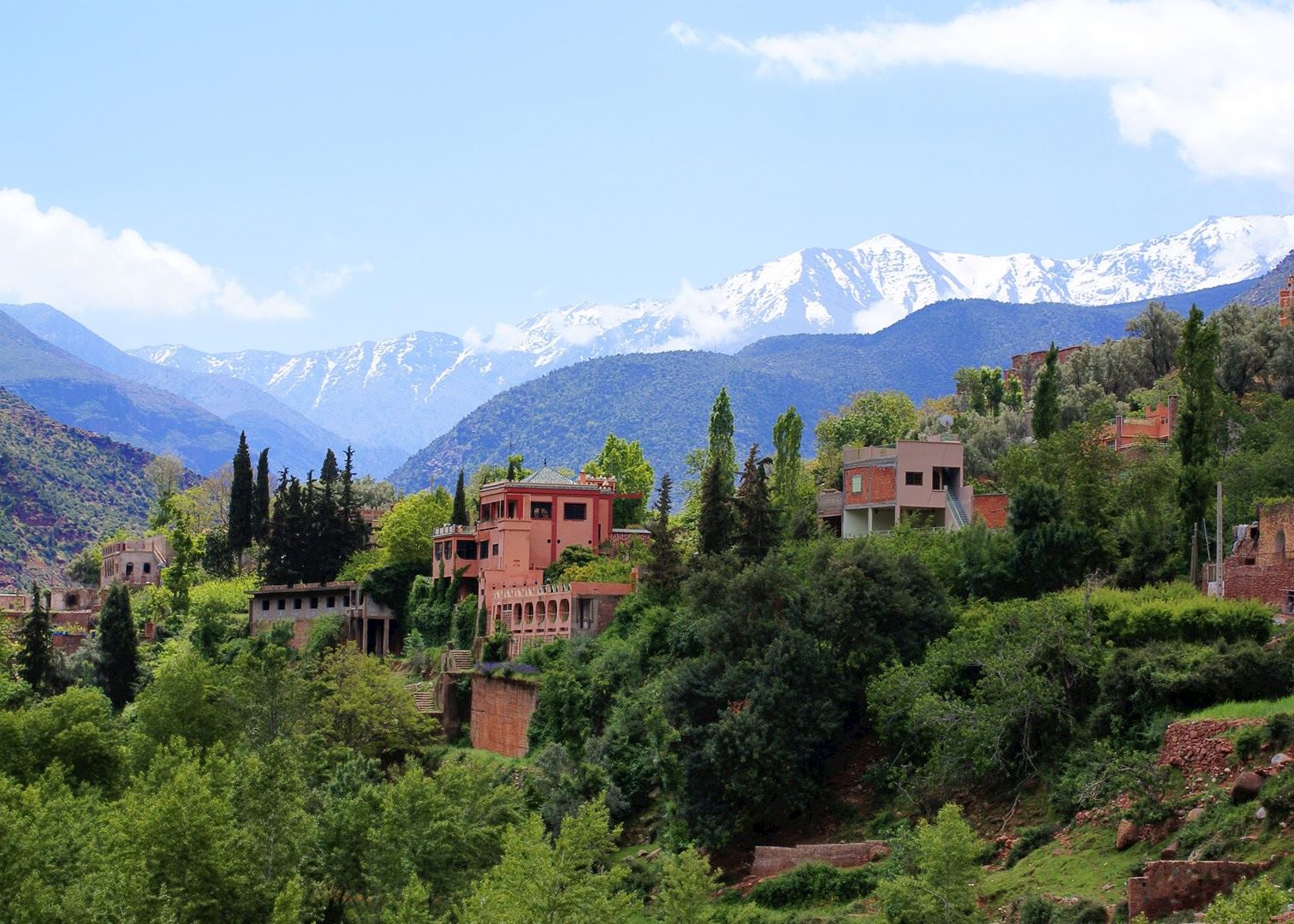
The largest villages and towns of the area are Ouarzazate, Tahannaout, Amizmiz, Imlil, Tin Mal and Ijoukak. The lake serves also as a source for fish for the local fishermen. Near Barrage Cavagnac there is a hydroelectric dam that has created the artificial lake Lalla Takerkoust. It is mainly inhabited by Berber people, who live in small villages and cultivate the high plains of the Ourika Valley. On the heights of Ouarzazate the massif is cut through by the Draa Valley which opens southward. To the north, in the direction of Marrakesh, the range descends less abruptly.

At the Atlantic and to the southwest, the range drops abruptly and makes a transition to the coast and the Anti-Atlas range. It has several peaks over 4,000 m (13,000 ft), including the highest summit in North Africa, Toubkal (4,167 m or 13,671 ft), and further east Ighil m'Goun (4,071 m or 13,356 ft), the second major summit of the range. The High Atlas in central Morocco rises in the west at the Atlantic coast and stretches in an eastern direction to the Moroccan-Algerian border. Recent studies suggest that deep processes rooted in the Earth's mantle may have contributed to the uplift of the High and Middle Atlas. One of the most striking features of the Atlas to geologists is the relative small amount of crustal thickening and tectonic shortening despite the important altitude of the mountain range. However, there is a lack of evidence for the nature of the subduction in the Atlas region, or for the thickening of the Earth's crust generally associated with continental collisions. In the case of the Africa-Europe collision, it is clear that tectonic convergence is partially responsible for the formation of the High Atlas, as well as for the closure of the Strait of Gibraltar and the formation of the Alps and the Pyrenees. Such convergent tectonic boundaries occur where two plates slide towards each other forming a subduction zone (if one plate moves underneath the other), and/or a continental collision (when the two plates contain continental crust). In the Paleogene and Neogene Periods (~66 million to ~1.8 million years ago), the mountain chains that today constitute the Atlas were uplifted, as the land masses of Europe and Africa collided at the southern end of the Iberian Peninsula. Most of the rocks forming the surface of the present High Atlas were deposited under the ocean at that time. This extension was responsible for the formation of many thick intracontinental sedimentary basins including the present Atlas. It consisted of a widespread extension of the Earth's crust that rifted and separated the continents mentioned above. Some remnants can also be found in the later formed Appalachians in North America.Ī second phase took place during the Mesozoic Era (before ~66 My). Today, the remains of this chain can be seen in the Fall Line region in the Eastern United States. These mountains were formed when Africa and America collided and were once a chain rivaling today's Himalayas. The Anti-Atlas Mountains are believed to have originally been formed as part of Alleghenian orogeny. The weather is generally cool but has sunny summers, and the average temperature there is 25☌. Many of these species are endangered and a few are already extinct. The mountains are home to a number of animals and plants which are mostly found within Africa but some of which can be found in Europe. The terms for 'mountain' are Adrar and adras in some Berber languages, and these terms are believed to be cognates of the toponym Atlas.

The Atlas mountains are primarily inhabited by Berber populations. The range's highest peak is Toubkal, which is in central Morocco, with an elevation of 4,167 metres (13,671 ft). It stretches around 2,500 km (1,600 mi) through Morocco, Algeria and Tunisia. It separates the Sahara Desert from the Mediterranean Sea and the Atlantic Ocean the name "Atlantic" is derived from the mountain range. The Atlas Mountains are a mountain range in the Maghreb in North Africa. The location of the Atlas Mountains (red) across North Africa


 0 kommentar(er)
0 kommentar(er)
